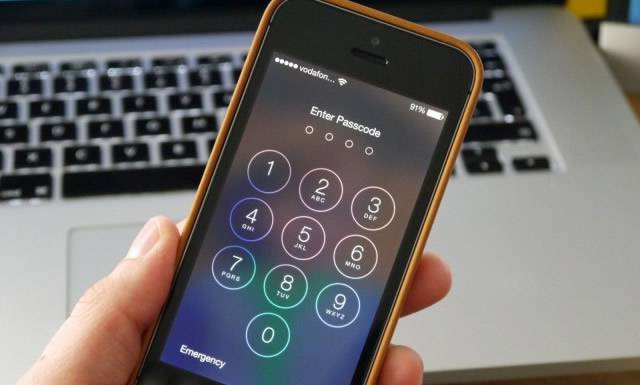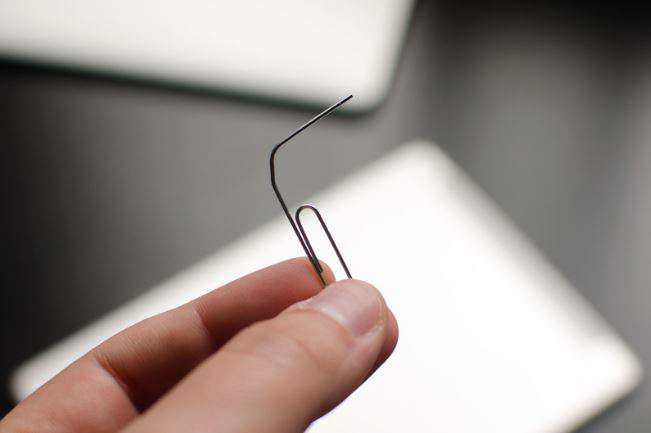In today’s digital age, the ability to stay connected is more important than ever. Whether you’re working from home, streaming movies, or checking your social media accounts, having a stable and reliable internet connection is crucial. One common scenario that many people find themselves in is needing to connect their Mac computer to WiFi from their iPhone. This could be because you’re traveling and need to access the internet using your iPhone’s cellular data, or perhaps your Mac is experiencing connectivity issues and you’re looking for an alternative solution. Whatever the case may be, in this blog post, we will explore several methods that you can use to connect your Mac to WiFi from your iPhone.
Video Tutorial:
Why You Need to Connect Mac to Wifi From iPhone
There are several reasons why you might need to connect your Mac to WiFi from your iPhone. Here are a few scenarios where this capability can come in handy:
1. Traveling: When you’re on the go and don’t have access to a reliable WiFi network, you can use your iPhone’s cellular data to connect your Mac to the internet.
2. WiFi Connectivity Issues: If your Mac is experiencing WiFi connectivity issues or the network you want to connect to is not compatible with your Mac, using your iPhone as a hotspot can provide a stable and reliable internet connection.
3. Limited WiFi Availability: In some situations, you may be in an area where WiFi access is limited or not available. By connecting your Mac to WiFi from your iPhone, you can continue to access the internet.
4. Flexibility: Being able to connect your Mac to WiFi from your iPhone gives you the flexibility to work or browse the internet wherever you are, without relying solely on a traditional WiFi network.
Now that we understand the benefits of connecting your Mac to WiFi from your iPhone, let’s explore some methods you can use to achieve this.
Method 1: Via Personal Hotspot
One of the easiest methods to connect your Mac to WiFi from your iPhone is by using the Personal Hotspot feature. This feature allows you to turn your iPhone into a WiFi access point, essentially creating a mini WiFi network that your Mac can connect to.
Steps:
1. Open the Settings app on your iPhone.
2. Tap on “Personal Hotspot” to access the settings.
3. Toggle on the “Personal Hotspot” switch to enable it.
4. You may need to set up a password for the hotspot. Tap on “Wi-Fi Password” to do so and enter a secure password.
5. On your Mac, click on the WiFi icon in the menu bar.
6. Look for your iPhone’s hotspot network name and click on it to connect.
7. Enter the password you set up in step 4 when prompted.
Pros:
– Easy and quick setup process.
– Can be used anywhere as long as your iPhone has cellular data.
– Provides a secure connection using password protection.
Cons:
– Utilizes your iPhone’s cellular data, which may have limitations depending on your cellular plan.
– Connecting multiple devices to the hotspot can reduce the speed and stability of the connection.
Method 2: Via USB Cable
If you prefer a more direct and secure connection between your Mac and iPhone, you can use a USB cable to tether your devices together.
Steps:
1. Connect your iPhone to your Mac using a USB cable.
2. On your iPhone, open the Settings app.
3. Tap on “Personal Hotspot” to access the settings.
4. Toggle on the “Personal Hotspot” switch to enable it.
5. On your Mac, open “System Preferences” from the Apple Menu.
6. Click on “Network” to access network settings.
7. From the list of available network connections, select your iPhone’s hotspot connection.
Pros:
– Provides a secure and stable connection.
– Doesn’t rely on WiFi or cellular data for connection.
Cons:
– Requires a physical USB cable to connect the devices.
– Can only be used if your iPhone and Mac are in close proximity.
Method 3: Via Bluetooth
Connecting your Mac to WiFi from your iPhone can also be done using Bluetooth. This method offers a convenient wireless connection option.
Steps:
1. Turn on Bluetooth on both your iPhone and Mac.
2. On your iPhone, open the Settings app.
3. Tap on “Personal Hotspot” to access the settings.
4. Toggle on the “Personal Hotspot” switch to enable it.
5. On your Mac, open “System Preferences” from the Apple Menu.
6. Click on “Bluetooth” to access Bluetooth settings.
7. Under the “Devices” section, click on your iPhone to pair it with your Mac.
Pros:
– Doesn’t require a physical cable for connection.
– Offers a wireless solution for connecting your Mac to WiFi from your iPhone.
Cons:
– Bluetooth connections can be slower compared to WiFi or USB connections.
– Limited range compared to WiFi connections.
Method 4: Via AirDrop
Another method to connect your Mac to WiFi from your iPhone is by using AirDrop, a feature built into both devices for easy file sharing.
Steps:
1. On your Mac, open Finder.
2. Click on “AirDrop” in the sidebar.
3. On your iPhone, swipe up from the bottom of the screen to access Control Center.
4. Press and hold the network settings card (the box with WiFi, Bluetooth, and AirDrop icons).
5. Tap on “AirDrop” and select “Everyone” or “Contacts Only.”
6. Your iPhone’s AirDrop name should now appear in the AirDrop section on your Mac.
7. Click on your iPhone’s AirDrop name to establish a connection.
Pros:
– Allows for easy file sharing between your Mac and iPhone.
– Does not require any additional settings or configurations.
Cons:
– Does not provide a direct internet connection for your Mac.
– Limited to only sharing files between devices.
What to Do If You Can’t Connect Mac to WiFi From iPhone
If you encounter any issues while trying to connect your Mac to WiFi from your iPhone, here are a few fixes you can try:
1. Make sure your iPhone’s Personal Hotspot is turned on and broadcasting.
2. Restart both your iPhone and Mac to refresh their network connections.
3. Disable and re-enable WiFi and Bluetooth on both devices.
4. Check for any software updates on your iPhone and Mac and install them if available.
5. Reset network settings on your iPhone by going to Settings > General > Reset > Reset Network Settings.
Bonus Tips
Here are three bonus tips to enhance your experience when connecting your Mac to WiFi from your iPhone:
1. Monitor Data Usage: Keep an eye on your iPhone’s cellular data usage, especially if you’re using your iPhone as a hotspot for an extended period. This will help you avoid any unexpected data charges or overages.
2. Use a Strong Password: When setting up a personal hotspot on your iPhone, make sure to use a strong and secure password to protect your connection from unauthorized access.
3. Disconnect When Not in Use: Remember to disconnect your Mac from your iPhone’s hotspot when you’re not actively using it. This will help conserve your iPhone’s battery life and minimize unnecessary data usage.
FAQs
Q1: Can I connect multiple Mac computers to my iPhone hotspot?
A: Yes, you can connect multiple devices to your iPhone’s hotspot. However, keep in mind that the more devices connected, the slower the overall connection speed may be.
Q2: Will connecting my Mac to WiFi from my iPhone use my cellular data?
A: Yes, when you connect your Mac to WiFi from your iPhone, it will use your iPhone’s cellular data. Keep an eye on your data usage to avoid any unexpected charges.
Q3: Can I use these methods to connect my Mac to WiFi from any iPhone?
A: Yes, these methods can be used to connect any Mac computer to WiFi from any iPhone, as long as the devices are compatible and meet the necessary requirements.
Q4: What is the maximum range for connecting my Mac to WiFi from my iPhone via Bluetooth?
A: The maximum range for connecting your Mac to WiFi from your iPhone via Bluetooth is typically around 30 feet. Keep in mind that walls and other obstacles may reduce the effective range.
Q5: Can I use AirDrop to share files between my Mac and iPhone without connecting to WiFi?
A: Yes, you can use AirDrop to share files between your Mac and iPhone without connecting to WiFi. AirDrop uses Bluetooth to establish a connection between the two devices.
Final Thoughts
Connecting your Mac to WiFi from your iPhone can be a useful solution in various scenarios, whether you’re on the go, experiencing WiFi connectivity issues, or facing limited WiFi availability. The methods we covered in this blog post provide different options to suit your preferences and needs. Experiment with each method to find the one that works best for you, and enjoy the convenience of staying connected wherever you are.{“@context”:”https://schema.org”,”@type”:”FAQPage”,”mainEntity”:[{“@type”:”Question”,”name”:” Can I connect multiple Mac computers to my iPhone hotspot?”,”acceptedAnswer”:{“@type”:”Answer”,”text”:” Yes, you can connect multiple devices to your iPhone’s hotspot. However, keep in mind that the more devices connected, the slower the overall connection speed may be.”}},{“@type”:”Question”,”name”:” Will connecting my Mac to WiFi from my iPhone use my cellular data?”,”acceptedAnswer”:{“@type”:”Answer”,”text”:” Yes, when you connect your Mac to WiFi from your iPhone, it will use your iPhone’s cellular data. Keep an eye on your data usage to avoid any unexpected charges.”}},{“@type”:”Question”,”name”:” Can I use these methods to connect my Mac to WiFi from any iPhone?”,”acceptedAnswer”:{“@type”:”Answer”,”text”:” Yes, these methods can be used to connect any Mac computer to WiFi from any iPhone, as long as the devices are compatible and meet the necessary requirements.”}},{“@type”:”Question”,”name”:” What is the maximum range for connecting my Mac to WiFi from my iPhone via Bluetooth?”,”acceptedAnswer”:{“@type”:”Answer”,”text”:” The maximum range for connecting your Mac to WiFi from your iPhone via Bluetooth is typically around 30 feet. Keep in mind that walls and other obstacles may reduce the effective range.”}},{“@type”:”Question”,”name”:” Can I use AirDrop to share files between my Mac and iPhone without connecting to WiFi?”,”acceptedAnswer”:{“@type”:”Answer”,”text”:” Yes, you can use AirDrop to share files between your Mac and iPhone without connecting to WiFi. AirDrop uses Bluetooth to establish a connection between the two devices.”}}]}




